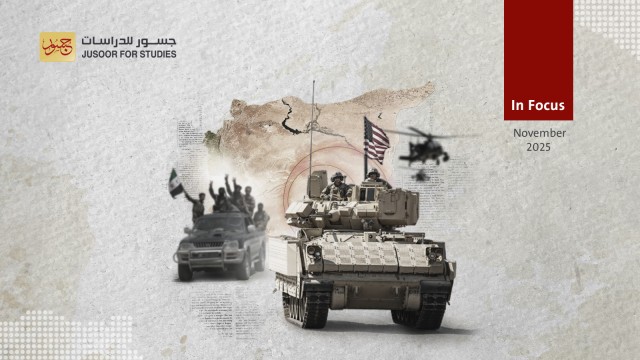Indications of Communication Breakdown Between the United Nations and the Syrian Regime
Two weeks have passed since the United Nations and the Syrian regime reached an agreement allowing the latter to deliver humanitarian aid through the Bab al-Hawa crossing for a six-month period. The agreement also extends the authorization for aid delivery via the Bab al-Salama and al-Ra'i crossings for an additional three months. Despite this understanding, the resumption of humanitarian aid deliveries through the Bab al-Hawa crossing has yet to occur. This has prompted a call for a special session of the UN Security Council on Monday, August 21, to be followed by closed-door discussions to assess the humanitarian situation in Syria.
The understanding stipulates conditions set by the Syrian regime for the United Nations to utilize the Bab al-Hawa crossing. It mandates that the UN must avoid any interactions with entities the regime labels as 'terrorist'—specifically pointing to the Interim Government and the Salvation Government. Furthermore, the International Committee of the Red Cross, along with the Syrian Arab Red Crescent, are granted the authority to oversee aid distribution in the northwestern regions beyond the regime's control. The agreement also emphasizes that unilateral sanctions should not impede humanitarian assistance efforts.
On August 8, 2023, Under-Secretary-General for Humanitarian Affairs Martin Griffiths appealed to the Security Council for a revised mandate for the United Nations Monitoring Mechanism (UNMM). This mechanism was initially established under the Secretary-General's authority by Resolution 2165 in 2014. Its operations were halted when Russia exercised its veto power on July 11, opposing the extension of Resolution 2672 for the year 2023. With the lapse of this resolution, the UN's mandate for overseeing the Bab al-Hawa border crossing also expired.
It seems that the United Nations' request for a revised mandate was a response to a communication from the Syrian regime. In this correspondence, the regime authorized the extension of humanitarian aid deliveries through the al-Ra'i and Bab al-Salama border crossings for an additional three months, lasting until November 13, 2023. The letter also stipulated new conditions, calling for a revised framework that ensures 'stringent and independent monitoring of aid consignments at the border.' This diverged from the initial agreement, which had been to continue operations under the guidelines set forth by Resolution 2165 (2014).
The existing monitoring framework stipulates that the United Nations, in agreement with Syria's neighboring countries, is responsible for overseeing the loading of humanitarian aid shipments at designated UN facilities. Additionally, the framework calls for the inspection of these shipments by the customs authorities of the relevant neighboring countries before they are allowed to cross into Syria. The Syrian regime, however, seems to consider the oversight provided by Turkish customs authorities to be inadequate and advocates for the involvement of additional authorities alongside them.
Consequently, the framework for humanitarian aid entry into Syria is once again shrouded in uncertainty, as divisions resurface within the Security Council regarding this issue. This uncertainty gives rise to five potential scenarios:
• Proceeding based on an understanding outlined in either a press statement or a presidential statement from the Security Council. This would call for the ongoing delivery of humanitarian aid in accordance with prior resolutions, while also recommending that the United Nations intensify its monitoring and vigilant oversight of the aid and regularly update the Council on any developments.
• Proceeding based on a revised version of Resolution 2165 (2014), which is in line with the regime's original request. This would entail continuing operations under the guidelines of Resolution 2672 (2023)—covering aspects like early recovery and aid across conflict lines—while implementing changes to the existing monitoring mechanism.
• Operating under the existing framework set forth by Resolution 2165 (2014), which would mean an extension of Resolution 2672 (2023). This option is backed by the P3 group—comprising the United States, the United Kingdom, and France—as well as other member states with similar views. The aim is to secure Security Council authorization for cross-border aid deliveries, thereby ensuring a predictable and unhindered flow of assistance.
• Adopting a bilateral mechanism that operates outside the scope of the Security Council, an approach advocated by China, Russia, and the United Arab Emirates. These countries maintain that aid delivery to northwestern Syria should be a bilateral issue between the United Nations and the Syrian regime. They assert that the lack of a reauthorized cross-border aid mechanism—especially after the veto against Resolution 2672—eliminates any role for the Security Council in Syria's humanitarian matters. This would nullify all clauses from previous resolutions and obviate the need for ongoing monthly briefings to the Council about Syria's humanitarian situation, as previously mandated by Resolution 2672, arguing that such requirements are no longer valid.
• Implementing a donor-centric mechanism independent of the Security Council, prompted by the breakdown of the bilateral agreement between the Syrian regime and the United Nations. In this case, the P3 group would choose to channel aid through a specialized donor fund, like the 'Equity Mechanism,' serving as an alternative to United Nations-administered aid to Syria.
In light of the current divisions within the Security Council concerning the aid delivery mechanism to Syria, the agreement between the United Nations and the Syrian regime seems poised for collapse before its implementation even commences. This situation could persist unless a collective 'understanding' is reached during the special session and subsequent closed-door discussions, enabling the sustained delivery of cross-border humanitarian aid.








